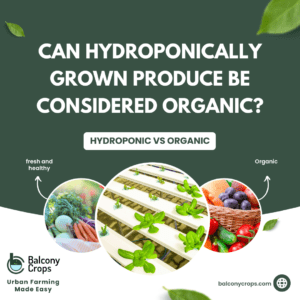Let’s explore the role of technology in hydroponics and uncover emerging trends and innovations that are shaping the industry. Whether you have a spacious balcony or a small corner to spare, hydroponics offers a sustainable and efficient way to grow your own fresh produce. From automated systems and precision control to LED lighting and smart monitoring, we’ll delve into how these advancements are optimising plant growth and maximising yields. Join us as we embark on this hydroponic journey, fueled by the power of technology.
Automated Systems and Precision Control :
In the realm of commercial hydroponic farming, the integration of automated systems and precision control plays a pivotal role in enhancing efficiency, productivity, and the overall quality of crops.
Automated systems are the backbone of commercial hydroponic farming, allowing growers to optimise resource utilisation and streamline operations. Through advanced technologies like automated nutrient delivery systems, growers can precisely administer the right balance of nutrients to plants, ensuring healthy growth. This automated approach eliminates the inconsistencies of traditional soil-based farming and offers precise control over nutrient uptake.
Precision control is equally important, enabling growers to maintain ideal environmental conditions. With advanced sensors and monitoring devices, wecan continuously track and regulate factors such as temperature, humidity, and lighting. Real-time monitoring and adjustments ensure optimal growth conditions for crops, maximising yields and quality.
By implementing automated systems and precision control, commercial hydroponic farmers can experience increased efficiency, minimised human error, and optimised crop growth. Furthermore, hydroponics kits are readily available from balconycrops enable individuals to embark on their hydroponic journey, cultivating fresh produce at home.
LED Lighting: Illuminating Growth Potential :
In the world of hydroponic farming, LED lighting has revolutionised crop development, maximising yields, and promoting sustainability. With precise control and energy efficiency, LED lighting illuminates the growth potential of plants.
LED lighting allows growers to create tailored environments that mimic natural sunlight, providing the optimal light spectrum for each growth stage. By adjusting intensity and colour, growers customise lighting to meet specific crop needs. This ensures accelerated growth, improved nutrient absorption, and robust development.

Additionally, LED lighting promotes sustainability. Reduced energy consumption and heat emission minimise carbon footprint, supporting eco-friendly cultivation methods.
Vertical Farming and Space Optimization :
Vertical farming has emerged as a groundbreaking approach to space optimization, revolutionising the way crops are cultivated. With its ability to maximise limited areas and promote efficient resource utilisation, vertical farming offers a sustainable solution for urban agriculture and beyond
One of the key advantages of vertical farming is its efficient use of resources. Hydroponic systems, often used in vertical setups, deliver water and nutrients directly to the plant roots, minimising water consumption and reducing nutrient waste. This targeted approach ensures that crops receive the necessary resources for optimal growth while conserving valuable resources.

Moreover, vertical farming provides precise control over environmental factors such as lighting, temperature, and humidity. By strategically positioning grow lights and using advanced climate control systems, growers can create an ideal growth environment for their crops. This level of control leads to accelerated growth, higher yields, and improved crop quality.
Smart Monitoring and Data Analytics :
Smart monitoring and data analytics have become indispensable tools in hydroponic farming, enabling growers to optimise crop production and make data-driven decisions. By leveraging advanced technologies and harnessing the power of data, growers can enhance efficiency, improve yields, and ensure the overall success of their hydroponic operations.
Smart monitoring systems employ sensors and devices to collect real-time data on crucial parameters like temperature, humidity, nutrient levels, and pH balance. This data is continuously analysed and interpreted, providing valuable insights into crop health and performance. By closely monitoring these factors, growers can detect deviations early on and take proactive measures.

Source: MDPI article by Neiko
Data analytics transforms raw data into actionable information. By analysing collected data, growers can identify trends, patterns, and correlations, optimising crop management strategies and adjusting environmental conditions.
Remote monitoring and control empower growers to access and manage their hydroponic systems from anywhere. Through mobile applications or web interfaces, growers can monitor real-time data, receive alerts, and make adjustments, ensuring optimal conditions for crop growth.
As we look ahead, it is essential for individuals, communities, and businesses to embrace the future of hydroponics. Whether you’re a home gardener looking to grow fresh produce on your balcony or an entrepreneur interested in commercial hydroponic farming, these technologies offer immense opportunities.
Take the first step by exploring hydroponics kits and consulting services available in your area. Learn about the benefits of vertical farming, automated systems, LED lighting, and smart monitoring. Educate yourself about data analytics and how it can help optimise your crop production. Stay updated on the latest innovations and trends in hydroponic farming.Remember, the future of hydroponics is in your hands. Act now and join the movement towards sustainable and innovative farming practices with balconycrops







